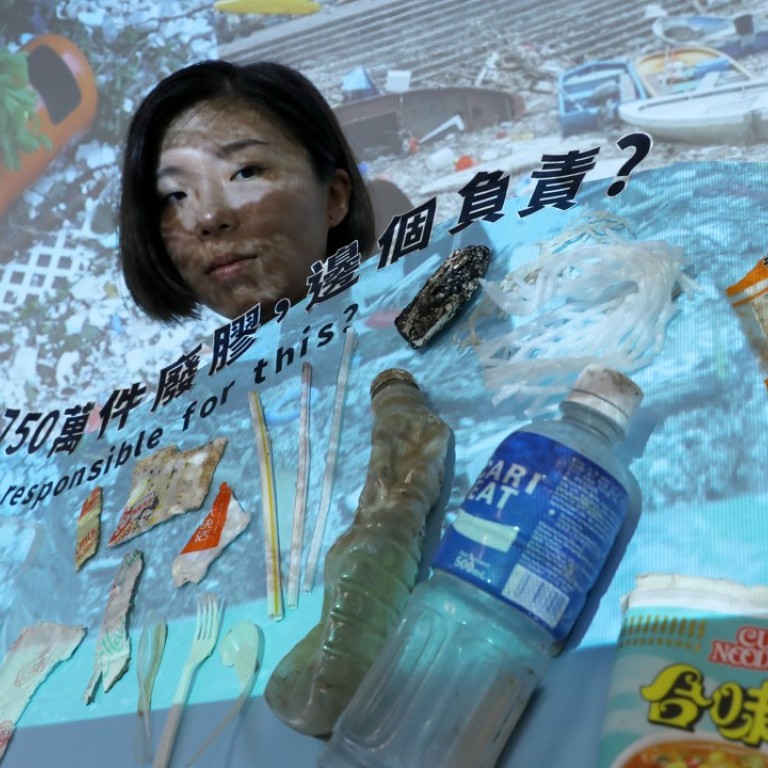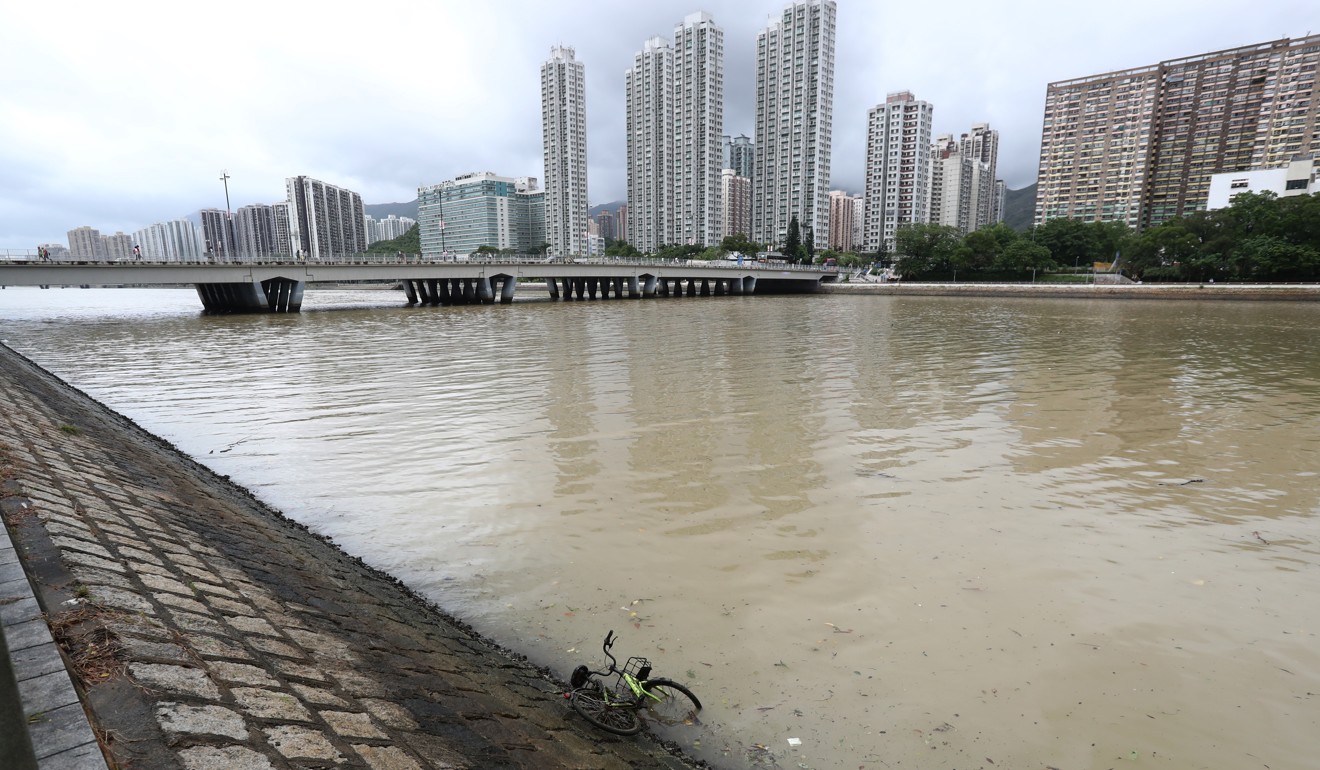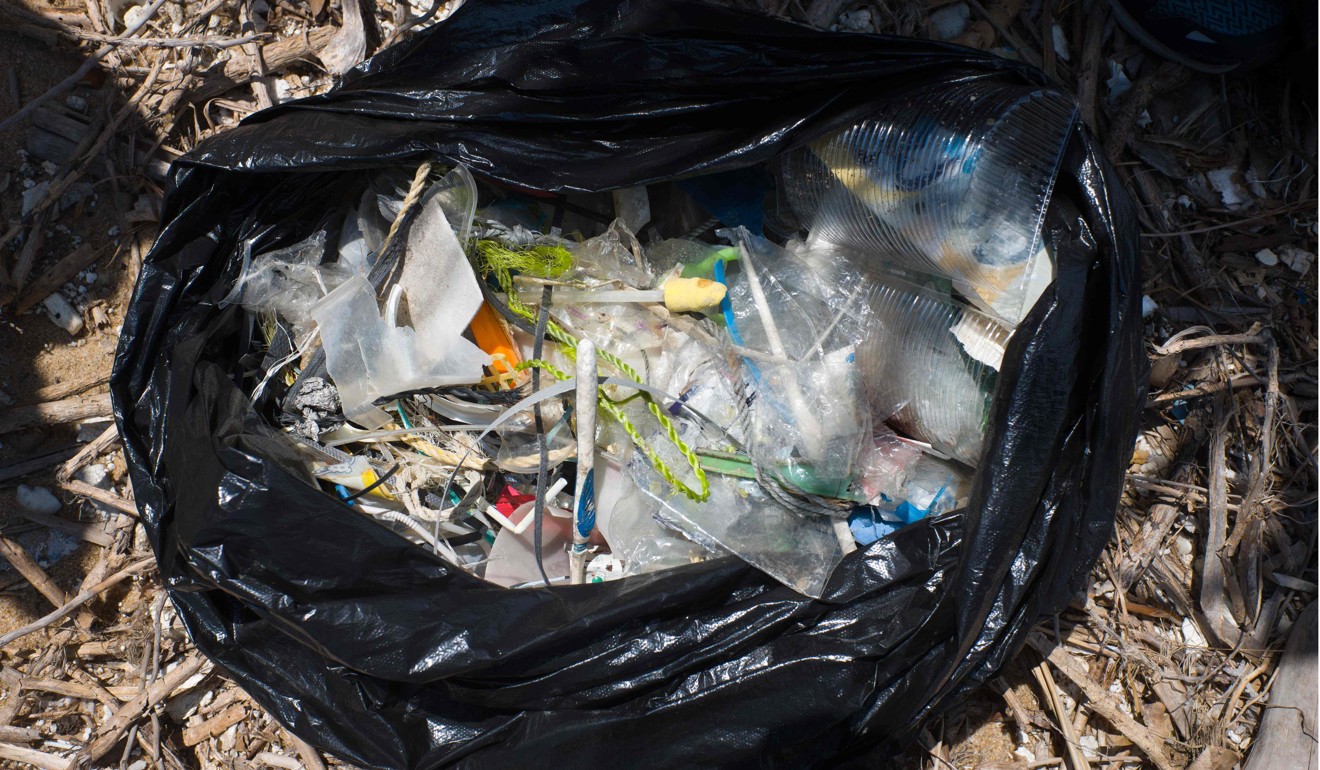
More than 17 million pieces of plastic waste flushed into sea via Hong Kong’s Shing Mun River each year
Greenpeace East Asia calls for urgent measures to cut down use of such items
More than 17 million pieces of waste plastic are flushed into the sea via Hong Kong’s Shing Mun River every year, an environmental group has found.
The top five items were plastic tableware such as straws and cutlery, plastic bags, plastic bottles, food packaging and polystyrene fragments, according to Greenpeace East Asia.
The Shing Mun River, which runs through the city’s most populous district of Sha Tin and discharges into Tolo Harbour, is a key floodwater drainage channel.
Campaigner Chan Hall-sion said the group’s study provided further evidence that a major pathway for marine plastics ending up in the ocean was through storm drains and waterways in urban areas.

“Trash from the city is generally blown by wind and flushed by rain into the storm water drains, after which it enters into the sea via the waterways, where it becomes marine plastic trash,” she said.
The group conducted on-site surveys and 24-hour video recording for eight days in August.
According to calculations and projections gathered from analysis of time lapse camera footage at the Tai Wai Nullah, the amount of daily plastic waste flowing into Tolo Harbour from the Shing Mun River was estimated to exceed 48,000 pieces on a dry day – and could easily double during a rainstorm.
Hong Kong mulls measures to curb ‘single-use’ plastic cutlery
The group also ran less detailed surveys at eight other major waterways, including the Tuen Mun River, Shek Sheung River, Sheung Yue River, Yuen Long Nullah, Shan Pui River and the Kam Tin River and observed similar situations.
Many of those rivers in the western New Territories flow into the ecologically sensitive Deep Bay.
Chan said urgent measures were needed to curb plastic waste at the source, and urged large local fast-food chains to cut down on the amount of single-use tableware they doled out.

“A levy scheme for plastic bags has already been in place for 10 years, and the government is about to launch a producer responsibility scheme for plastic bottles. But plastic tableware is being ignored, and there are no clear policies on it yet,” Chan said.
In her policy address last week, Chief Executive Carrie Lam Cheng Yuet-ngor said the government would study the feasibility of controlling or banning disposable plastic tableware, with the aim of completing it around 2020.
Speaking on a radio programme on Thursday, Secretary for the Environment Wong Kam-sing said legislation on certain single-use plastic items in the future would not be ruled out.
Almost quarter of plastic bottles washed up on Hong Kong beaches come from Coca-Cola
“We are discussing methods of cooperation with the [catering] industry,” he said, adding that overseas examples and local experience would be used to help assess what items should be regulated.
The government will trial a ban on plastic straws and foam lunchboxes at 80 government venues next year.
About 154 tonnes of disposable plastic tableware – about 2 per cent of all municipal waste – went into the city’s overflowing landfills in 2016. Plastic, in general, accounts for roughly a fifth of the city’s daily municipal waste generation.

